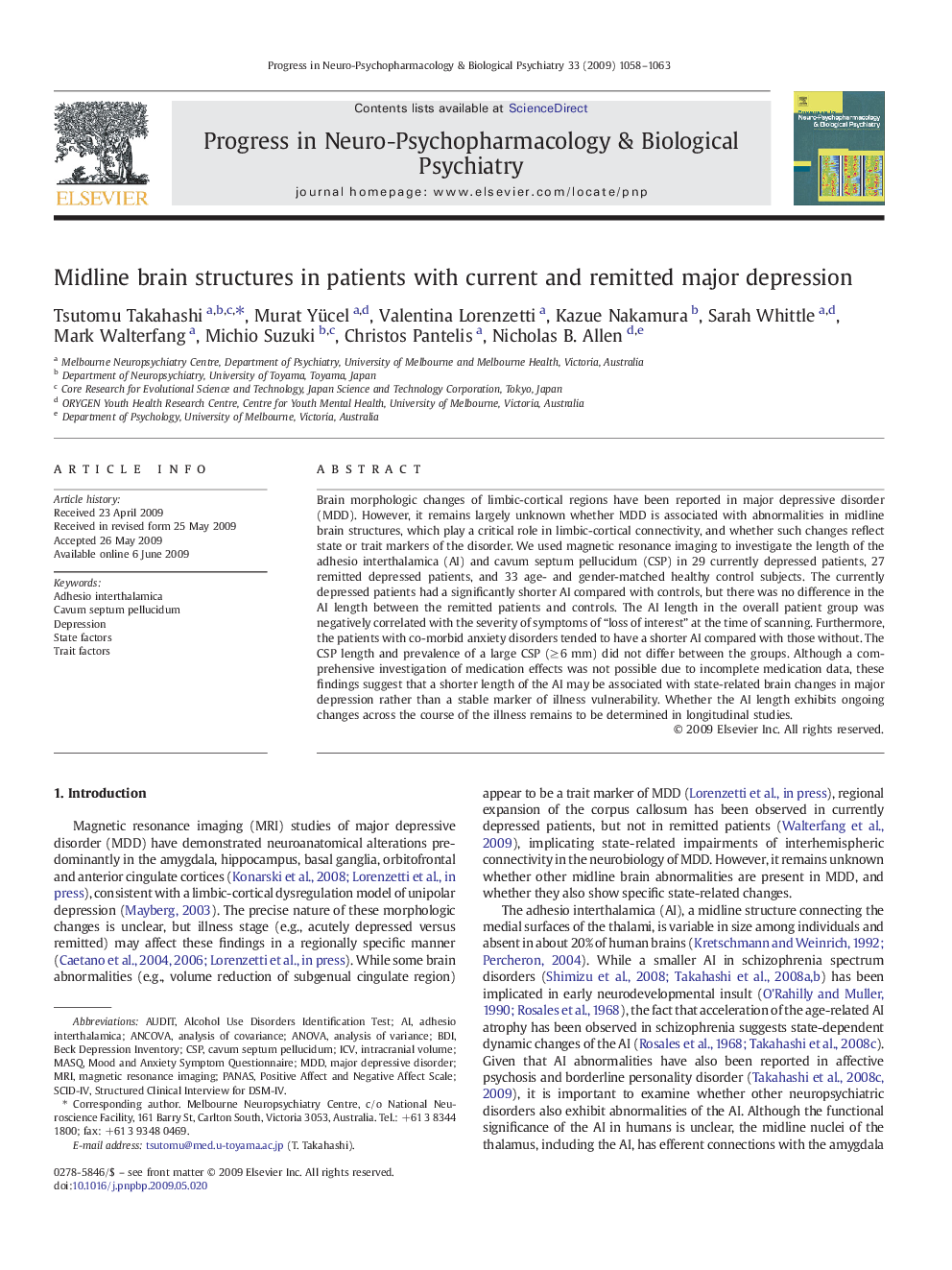| Article ID | Journal | Published Year | Pages | File Type |
|---|---|---|---|---|
| 2565821 | Progress in Neuro-Psychopharmacology and Biological Psychiatry | 2009 | 6 Pages |
Brain morphologic changes of limbic-cortical regions have been reported in major depressive disorder (MDD). However, it remains largely unknown whether MDD is associated with abnormalities in midline brain structures, which play a critical role in limbic-cortical connectivity, and whether such changes reflect state or trait markers of the disorder. We used magnetic resonance imaging to investigate the length of the adhesio interthalamica (AI) and cavum septum pellucidum (CSP) in 29 currently depressed patients, 27 remitted depressed patients, and 33 age- and gender-matched healthy control subjects. The currently depressed patients had a significantly shorter AI compared with controls, but there was no difference in the AI length between the remitted patients and controls. The AI length in the overall patient group was negatively correlated with the severity of symptoms of “loss of interest” at the time of scanning. Furthermore, the patients with co-morbid anxiety disorders tended to have a shorter AI compared with those without. The CSP length and prevalence of a large CSP (≥ 6 mm) did not differ between the groups. Although a comprehensive investigation of medication effects was not possible due to incomplete medication data, these findings suggest that a shorter length of the AI may be associated with state-related brain changes in major depression rather than a stable marker of illness vulnerability. Whether the AI length exhibits ongoing changes across the course of the illness remains to be determined in longitudinal studies.
